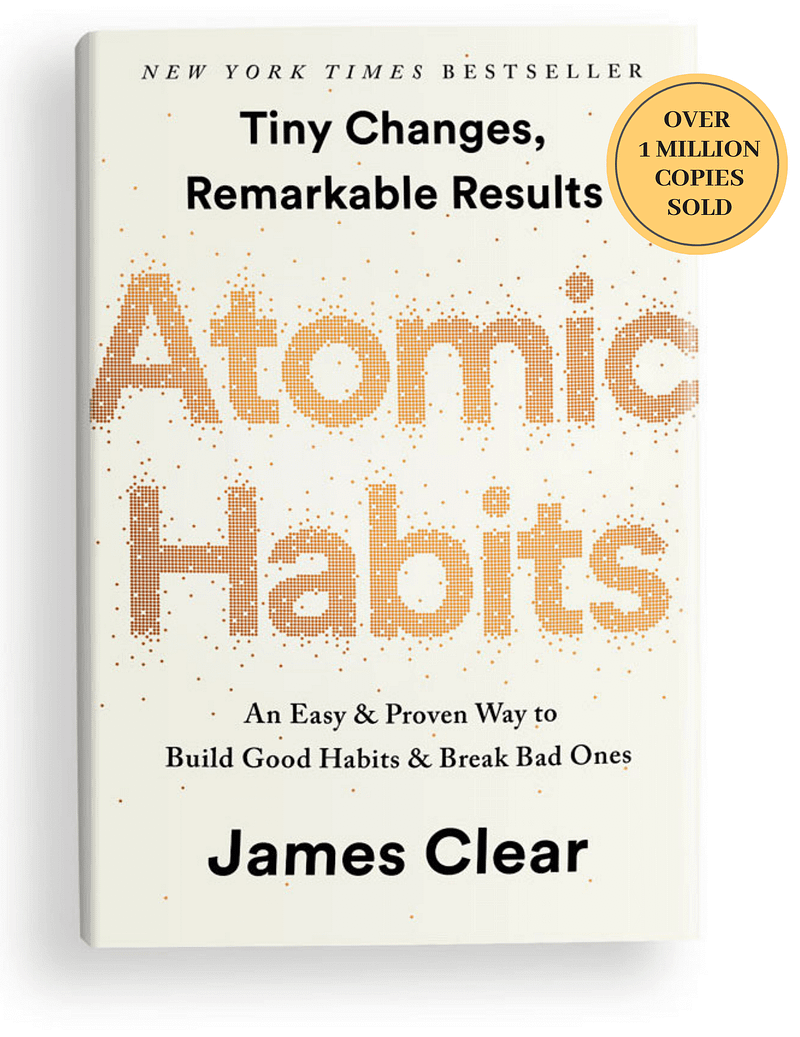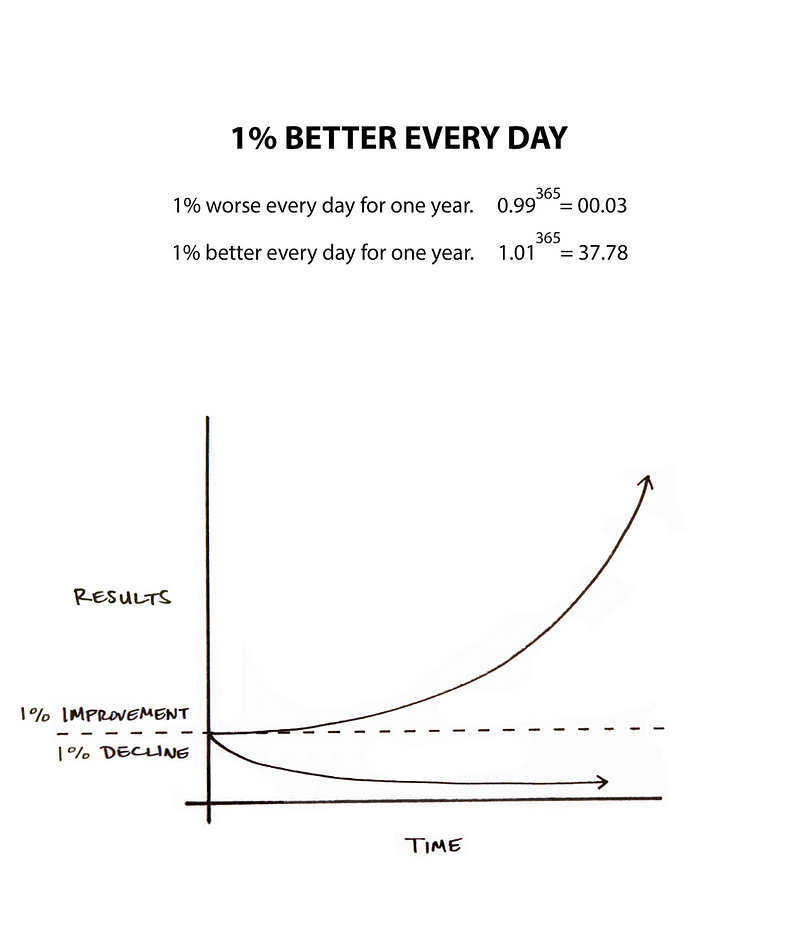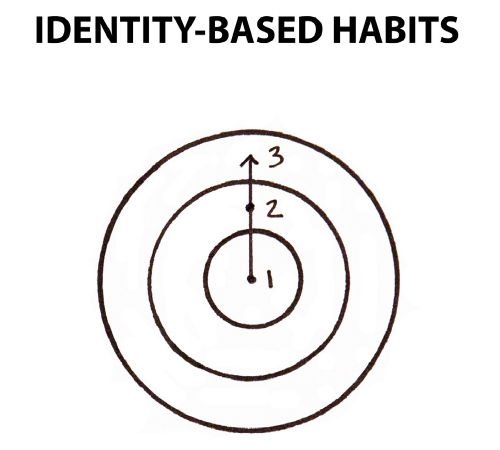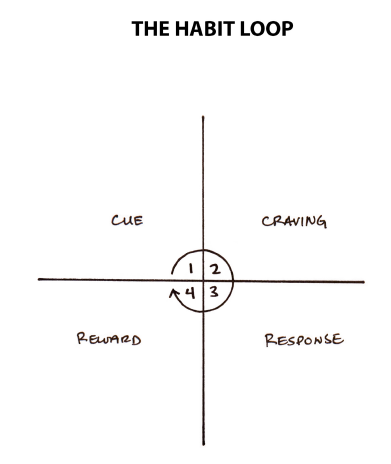
The book starts with James own personal history about how setting little habits and compounding these habits into more and better ones lead him to recover from a serious accident to be a college elite baseball player.
The book uses these kinds of anecdotes about habits, and supports them with scientific research behind them. The combo makes the narrative pleasant, and not just a collection of peer-reviewed habit articles, as you can reflect on the characters of his stories.
Table of Content
1. Small compounded habits drive your actions.
Positive and consistent habits are important but most important is taking care of the negative ones. Strong negative habits can take over your potential gains from good habit formation.
You can still have bad habits and be successful. You just need the majority, and not all, of your actions heading to your aims.

2. Switch from Outcome-based habits to Identity-based habits.
With outcome-based habits, the focus is on what you want to achieve. Usually, high performers and low performers, rich and poor, lucky winners and unlucky losers have the same goals and dreams. Therefore, goals are not good grounds for building habits.

With identity-based habits, the focus is on who you wish to become. Any change in habits starts with a change of beliefs about who you are. Decide the type of person that you want to be, and then act accordingly.

What a responsible person would do in my position? What a healthy person would do? What a good person would do in this situation?
As you focus more on the mindset of your role models than in generic goals, you develop good systems that reinforce good habits. Forget about goals and focus on what an exemplary person would do in your shoes.
Create a feedback loop of action and identity. Every action you take is a vote for the type of person you wish to become. A single instance will not transform your beliefs, but as the votes build up, so does the evidence of your new identity.
3. The Habit Loop and The Four Rules of Habits
This is “The Habit Loop”. The four stages of habit are best described as a feedback loop.

They form an endless cycle that is running every moment you are alive. This “habit loop” is continually scanning the environment, predicting what will happen next, trying out different responses, and learning from the results.
The Four Rules of Habits describe how to design an environment that has the correct cues to make you crave good habits, take action and reward yourself for doing the right thing to keep the loop running.
First rule: Make it obvious, control the cues
The format for creating an implementation intention is: “When situation X arises, I will perform response Y.” The first part of the statement is the cue that leads to the habit that you want to implement. If you want to make a habit a big part of your life, make the cue a big part of your environment.
Stop thinking about your environment as filled with objects. Start thinking about it as filled with relationships. Think in terms of how you interact with the spaces around you. Design your surroundings with cues that trigger good habits.
One of the most practical ways to eliminate a bad habit is to reduce exposure to the cue that causes it. Examples: put your Xbox in the drawer or keep your phone home when you go studying to the library. Get as many cues as you can that crave good habits. For bad habits do the opposite, reduce the cues and increase the friction or make it inconvenient/impossible.
Second rule: Make it attractive, control the dopamine
- Dopamine
Before a habit is learned, dopamine is released when the reward is experienced for the first time. Once you start doing something more and more, dopamine rises before taking action, immediately after a cue is recognized. This spike leads to a feeling of desire and a craving to take action whenever the cue is spotted. Dopamine rises as a craving builds.
Stacking habits and keeping habit streaks will increase the likelihood that you’ll stick with a habit. You create cravings that lead to dopamine for your brain. One action leads to the next (stack) and the previous action to the next one (streak). If you want to master a habit, the key is to start with repetition, not perfection.
We need to make our habits attractive because it is the expectations of a rewarding experience that motivates us doing it in the first place.
- Social norms
Behaviors are attractive when they help us fit in. We imitate the habits of three groups in particular: The close, the many and the powerful. We don’t choose our earliest habits, we imitate them.
We follow the script handed down by our friends and family, our church or school, our local community and society at large. There is tremendous internal pressure to comply with the norms of the group.
Every behavior has a surface level craving and a deeper, underlying motive: from conservative energy to win social acceptance and approval.
One of the most effective things you can do to build better habits is to join a culture where (1) your desired behavior is the normal behavior and (2) you already have something in common with the group.
Third rule: Make it easy, control the amount of friction
The central idea is to create an environment where doing the right thing is as easy as possible. Researchers estimate that 40 to 50 percent of our actions on any given day are done out of habit.
Every day, there are a handful of moments that deliver an outsized impact. I refer to these little choices as decisive moments. The key is to change the decisive moments such that it requires more work to get out of the good habit than to get started on it.
Automate. When you automate as much of your life as possible, you can spend your effort on the tasks machines cannot do yet. Each habit that we hand over to the authority of technology frees up time and energy to pour into the next stage of growth.
Fourth rule: Make it satisfying, control the habit loop
What is immediately rewarded is repeated. What is immediately punished is avoided. Because of how we are wired, most of us will spend all day chasing quick hits of satisfaction. It’s possible to train yourself to delay gratification, but it’s easier to use gratification to your advantage.
It is important to select short-term rewards that reinforce your identity rather than ones that conflict with it.
Tiny changes. Remarkable results. That’s the power of atomic habits.